James M. Borg
Evolved Open-Endedness in Cultural Evolution: A New Dimension in Open-Ended Evolution Research
Mar 24, 2022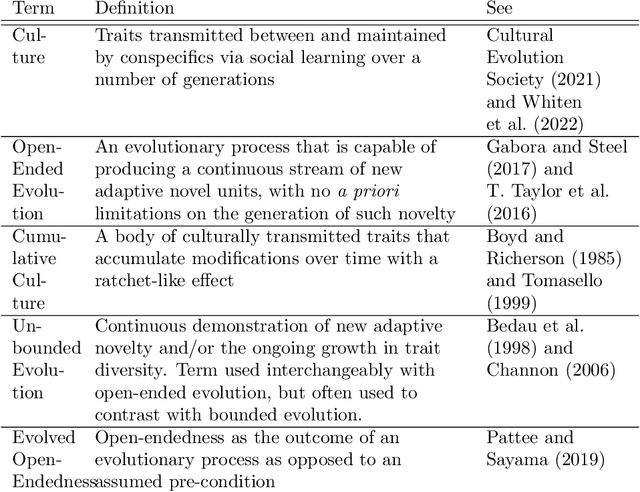
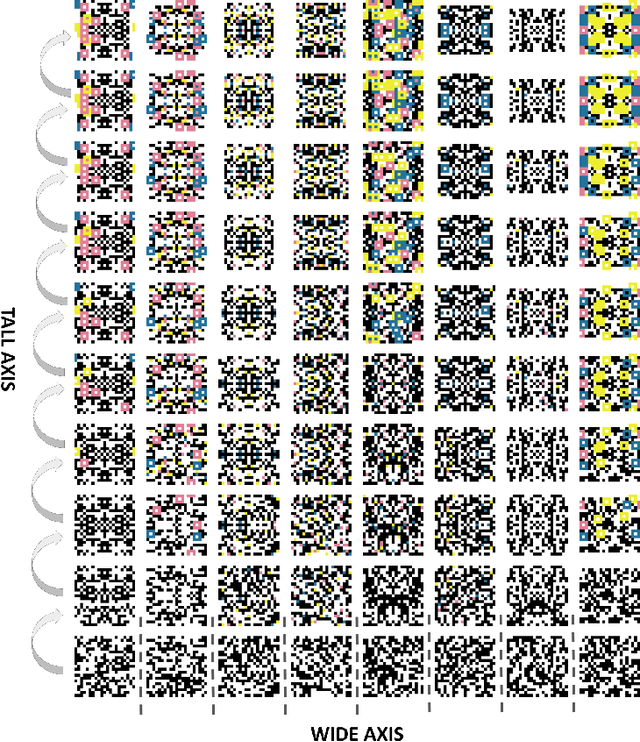
Abstract:The goal of Artificial Life research, as articulated by Chris Langton, is "to contribute to theoretical biology by locating life-as-we-know-it within the larger picture of life-as-it-could-be" (1989, p.1). The study and pursuit of open-ended evolution in artificial evolutionary systems exemplifies this goal. However, open-ended evolution research is hampered by two fundamental issues; the struggle to replicate open-endedness in an artificial evolutionary system, and the fact that we only have one system (genetic evolution) from which to draw inspiration. Here we argue that cultural evolution should be seen not only as another real-world example of an open-ended evolutionary system, but that the unique qualities seen in cultural evolution provide us with a new perspective from which we can assess the fundamental properties of, and ask new questions about, open-ended evolutionary systems, especially in regard to evolved open-endedness and transitions from bounded to unbounded evolution. Here we provide an overview of culture as an evolutionary system, highlight the interesting case of human cultural evolution as an open-ended evolutionary system, and contextualise cultural evolution under the framework of (evolved) open-ended evolution. We go on to provide a set of new questions that can be asked once we consider cultural evolution within the framework of open-ended evolution, and introduce new insights that we may be able to gain about evolved open-endedness as a result of asking these questions.
Coloured noise time series as appropriate models for environmental variation in artificial evolutionary systems
Jun 29, 2020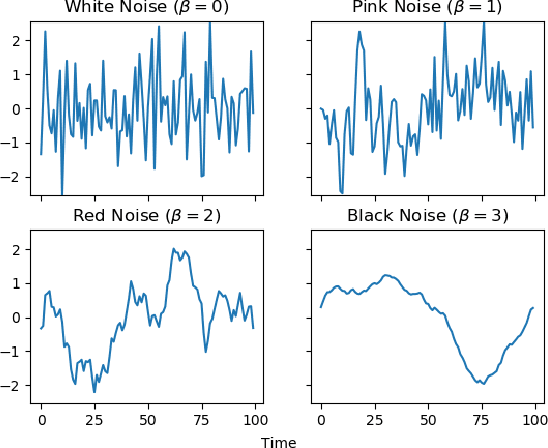
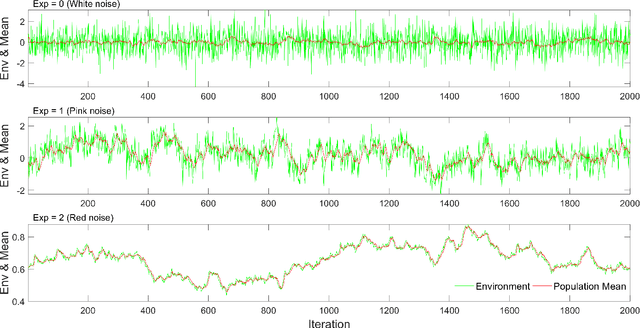
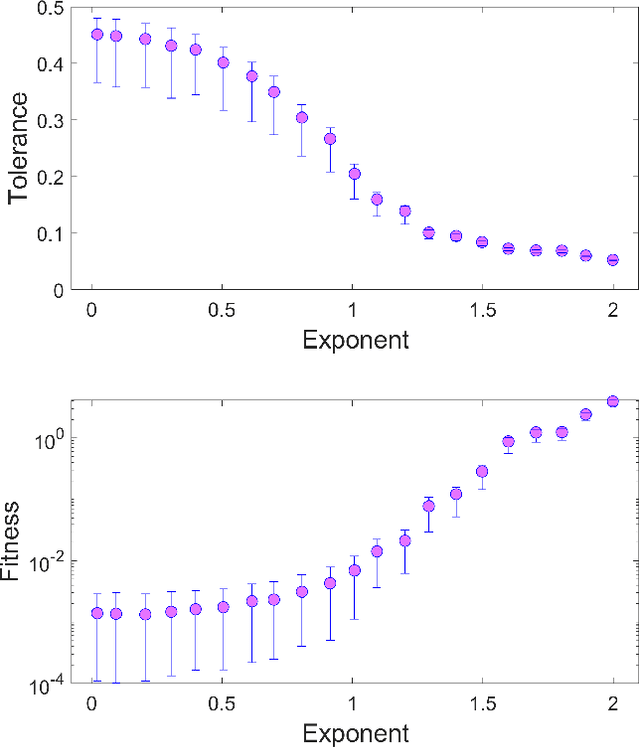
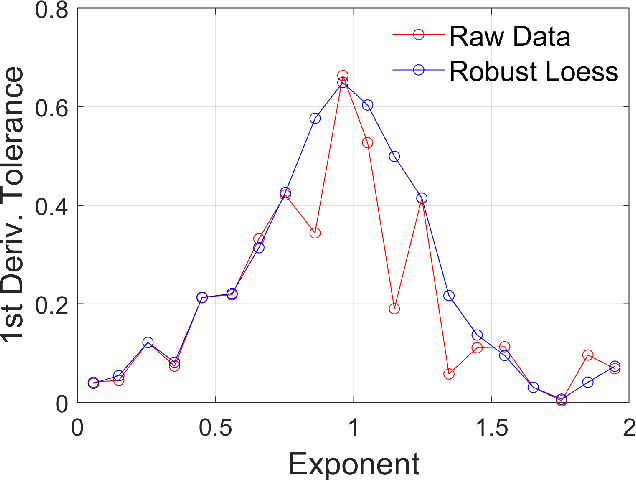
Abstract:Ecological, environmental and geophysical time series consistently exhibit the characteristics of coloured (1/f^\b{eta}) noise. Here we briefly survey the literature on coloured noise, population persistence and related evolutionary dynamics, before introducing coloured noise as an appropriate model for environmental variation in artificial evolutionary systems. To illustrate and explore the effects of different noise colours, a simple evolutionary model that examines the trade-off between specialism and generalism in fluctuating environments is applied. The results of the model clearly demonstrate a need for greater generalism as environmental variability becomes `whiter', whilst specialisation is favoured as environmental variability becomes `redder'. Pink noise, sitting midway between white and red noise, is shown to be the point at which the pressures for generalism and specialism balance, providing some insight in to why `pinker' noise is increasingly being seen as an appropriate model of typical environmental variability. We go on to discuss how the results presented here feed in to a wider discussion on evolutionary responses to fluctuating environments. Ultimately we argue that Artificial Life as a field should embrace the use of coloured noise to produce models of environmental variability.
 Add to Chrome
Add to Chrome Add to Firefox
Add to Firefox Add to Edge
Add to Edge